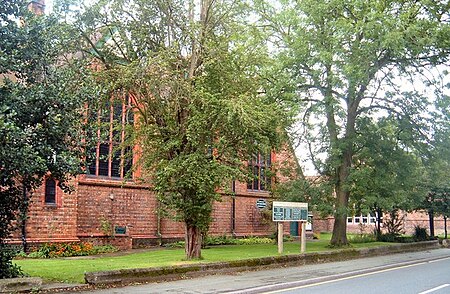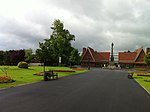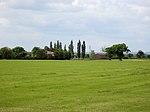St Barnabas' Church, Crewe
19th-century Church of England church buildingsBuildings and structures in CreweChurch of England church buildings in CheshireChurches completed in 1886Diocese of Chester ... and 5 more
EngvarB from September 2013Gothic Revival architecture in CheshireGothic Revival church buildings in EnglandGrade II listed churches in CheshirePaley and Austin buildings

St Barnabas' Church is in West Street, Crewe, Cheshire, England. It is an active Anglican parish church in the deanery of Nantwich, the archdeaconry of Macclesfield, and the diocese of Chester. The church is recorded in the National Heritage List for England as a designated Grade II listed building.
Excerpt from the Wikipedia article St Barnabas' Church, Crewe (License: CC BY-SA 3.0, Authors, Images).St Barnabas' Church, Crewe
West Street,
Geographical coordinates (GPS) Address Nearby Places Show on map
Geographical coordinates (GPS)
| Latitude | Longitude |
|---|---|
| N 53.102 ° | E -2.4628 ° |
Address
West Street
West Street
CW1 3HZ , Coppenhall
England, United Kingdom
Open on Google Maps









